Photos: Pay phones connect to a simpler time
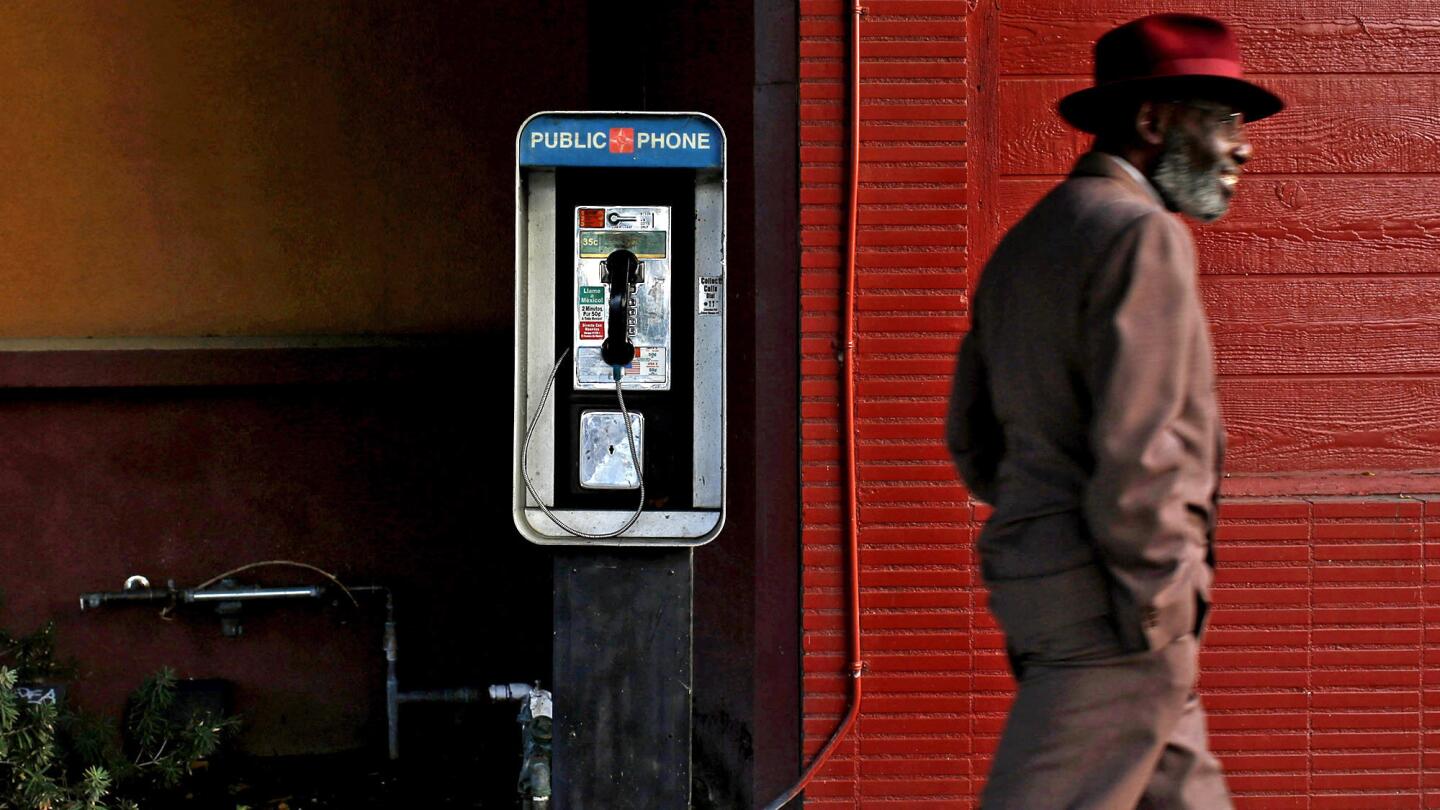
A man walks past a pay phone on South Leimert Boulevard in Los Angeles. Of California’s 27,000 pay phones, most are concentrated in L.A. County, the San Francisco Bay Area and along the Interstate 5 corridor, according to the Public Utilities Commission. (Katie Falkenberg / Los Angeles Times)
These are the pay phones of Los Angeles County. They look like relics from a time before cellphones, yet anyone picking up the receiver will hear a comforting, if slightly harsh, dial tone. They still work. The question is, is anyone using them?
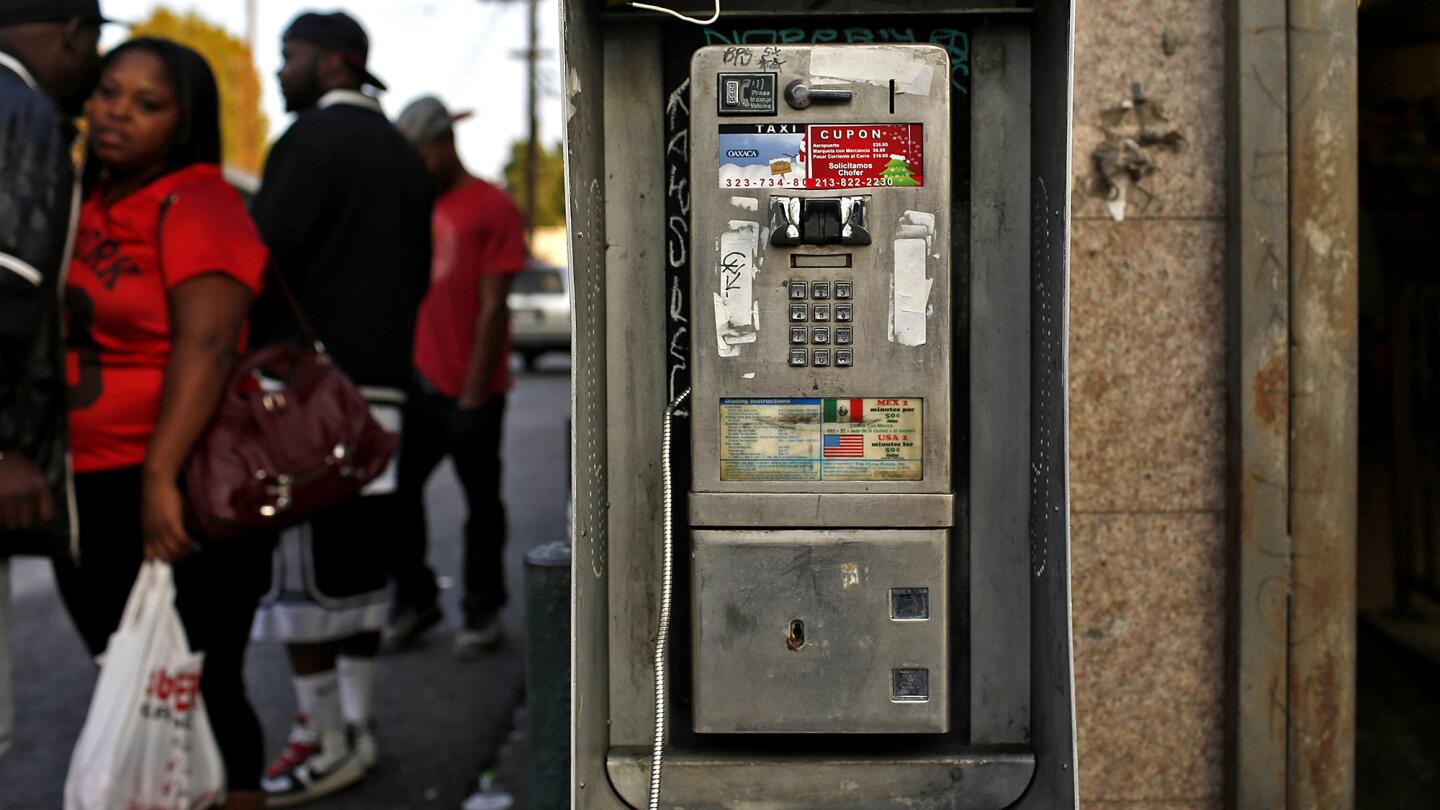
A pay phone that no longer works on Crenshaw Boulevard in Los Angeles. Pay phones used to be operated by major companies such as AT&T and Verizon; now the industry has been left to smaller businesses. (Katie Falkenberg / Los Angeles Times)
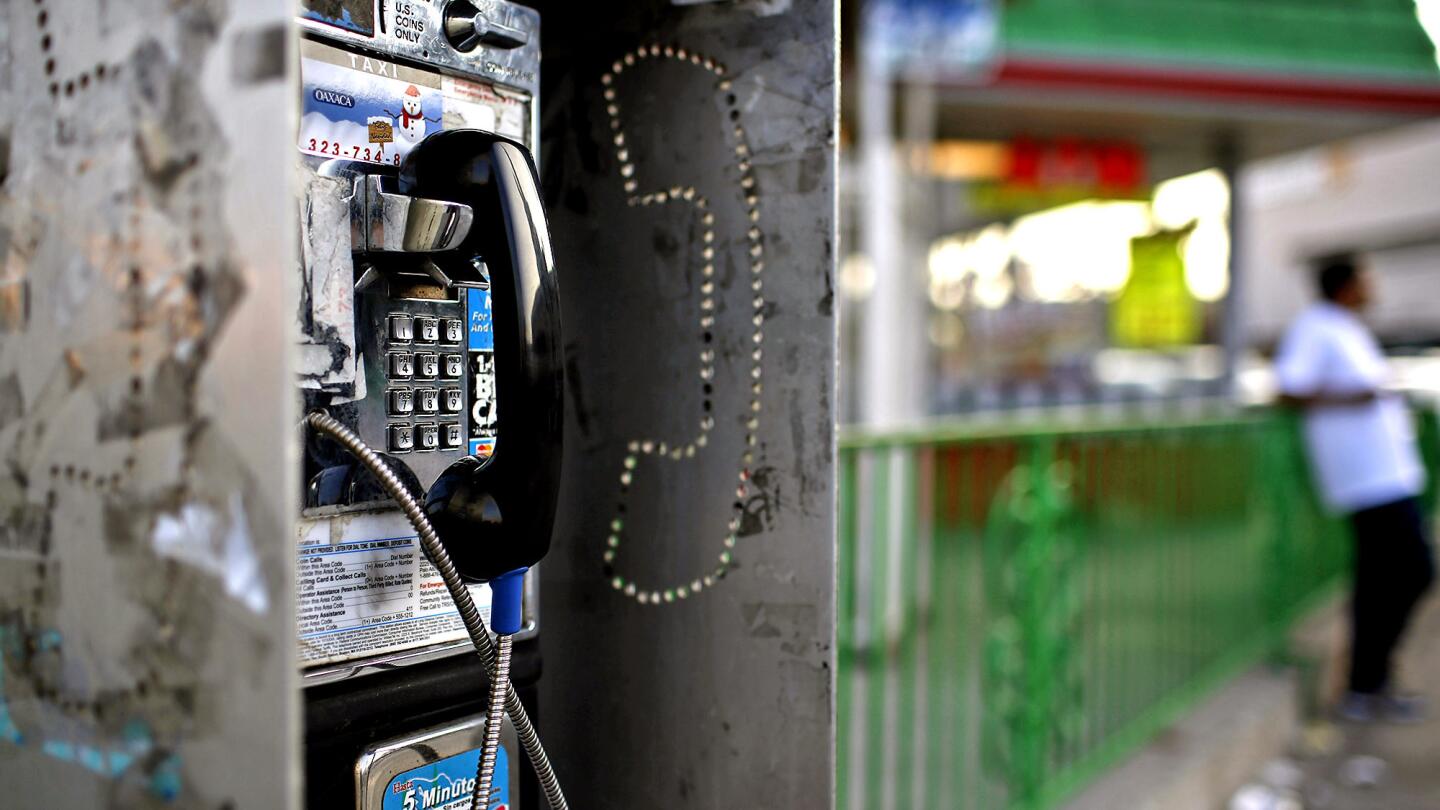
A dilapidated pay phone at the intersection of Martin Luther King Jr. and Crenshaw boulevards in L.A. There used to be more than 2 million pay phones in the United States, according to the American Public Communications Council, a trade association.
(Katie Falkenberg / Los Angeles Times)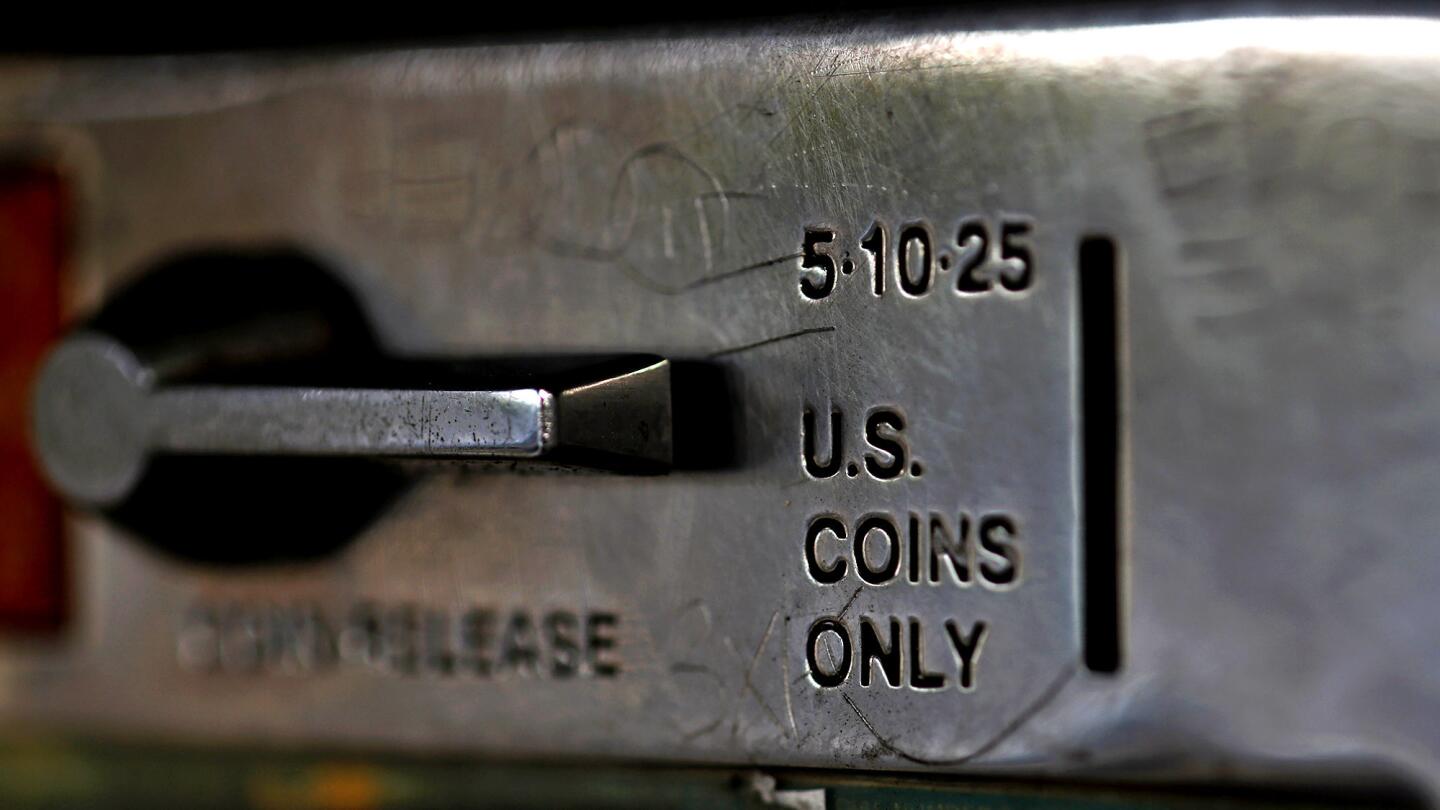
A pay phone on South Leimert Boulevard. The first public coin phone, as they were then called, was installed in 1889 by inventor William Gray, according to AT&T. Users would pay an attendant after the call was made.
(Katie Falkenberg / Los Angeles Times)Advertisement
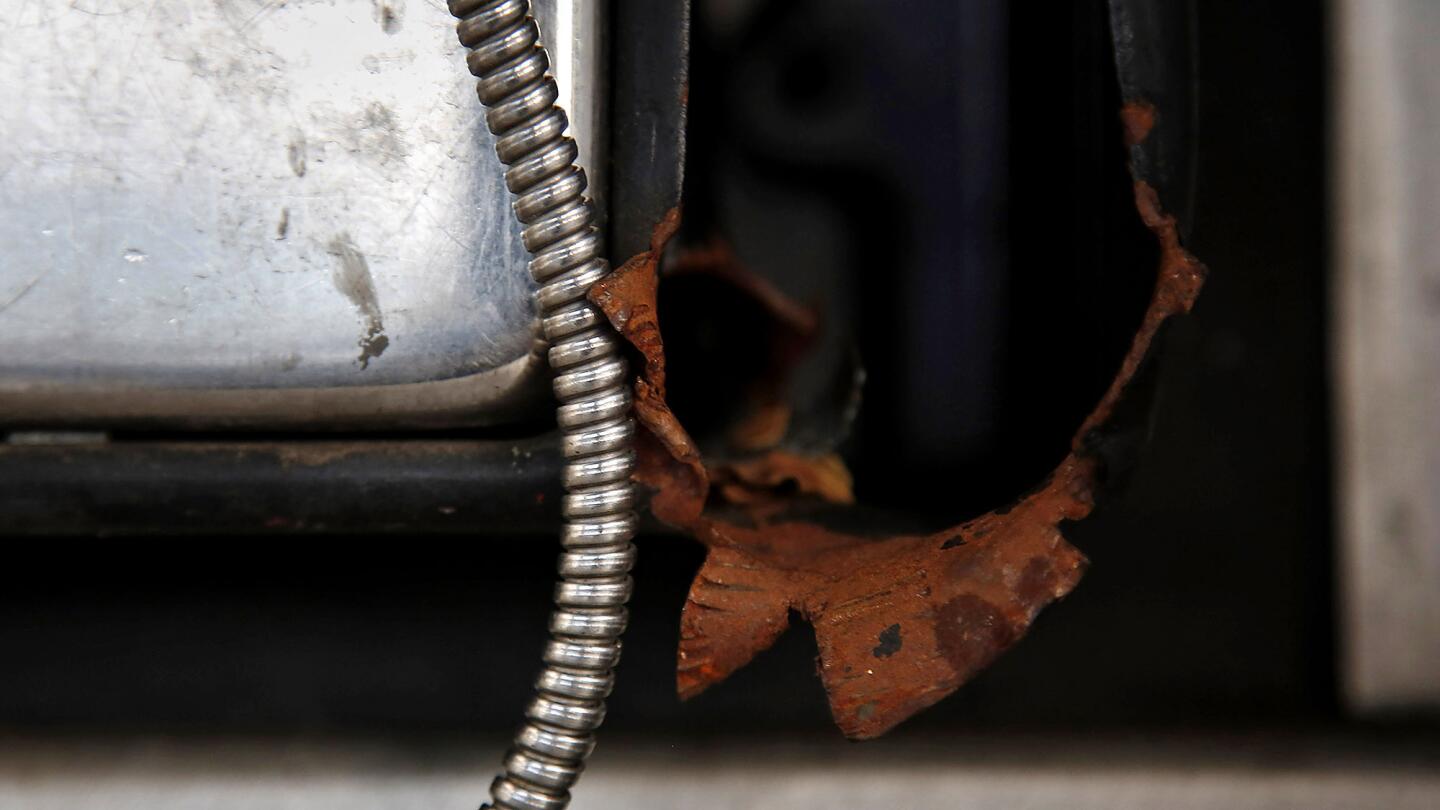
What’s left of the change holder on a pay phone on South Leimert Boulevard. For the 10% of American adults who don’t own a cellphone, according to the Pew Research Center’s Internet Project, pay phones are a lifeline. (Katie Falkenberg / Los Angeles Times)
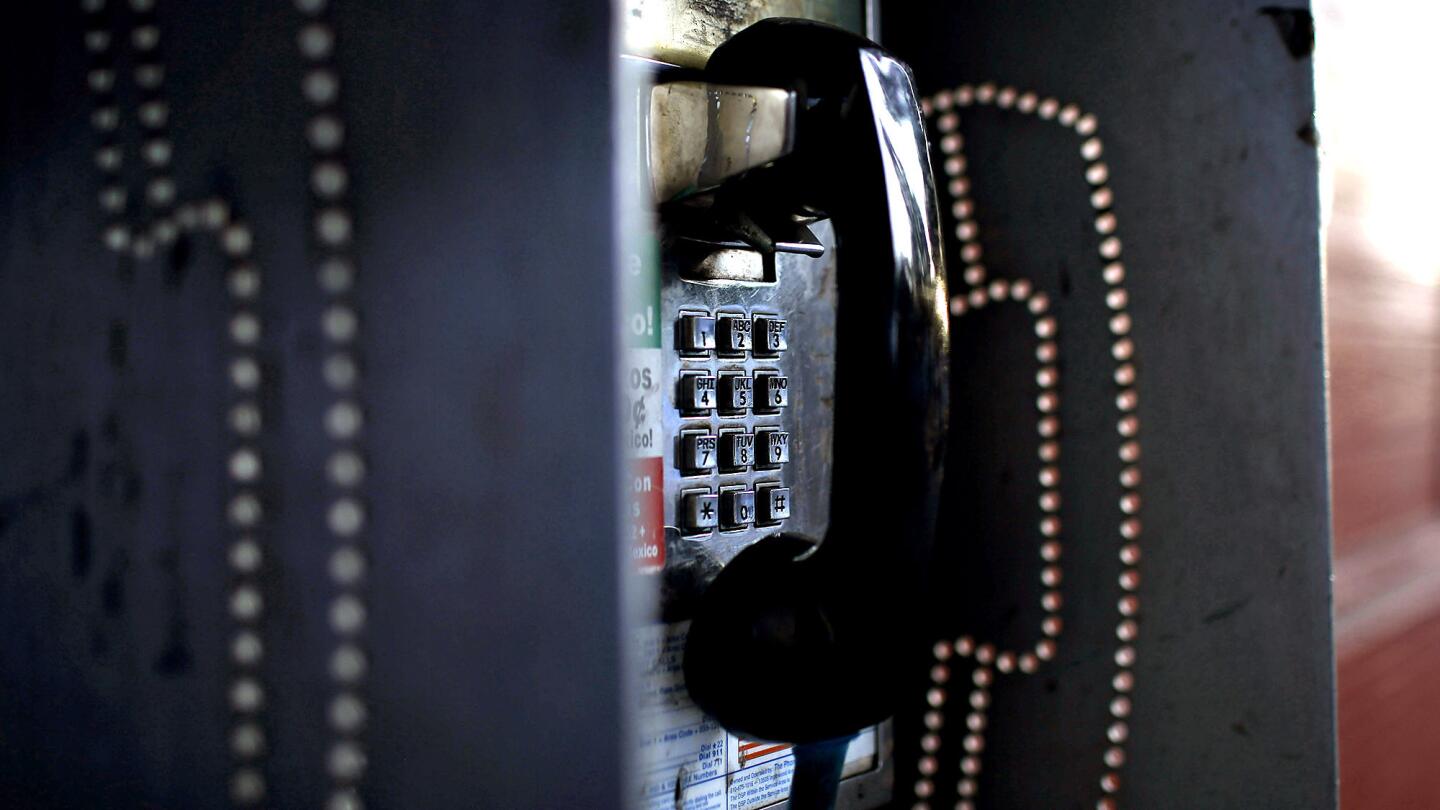
Though it appears to be a dying industry -- with 18% to 20% erosion a year -- pay phones are still profitable, says Mike Zumbo, cofounder and president of Pacific Telemanagement Services, which has become the largest pay phone provider in the country. (Katie Falkenberg / Los Angeles Times)
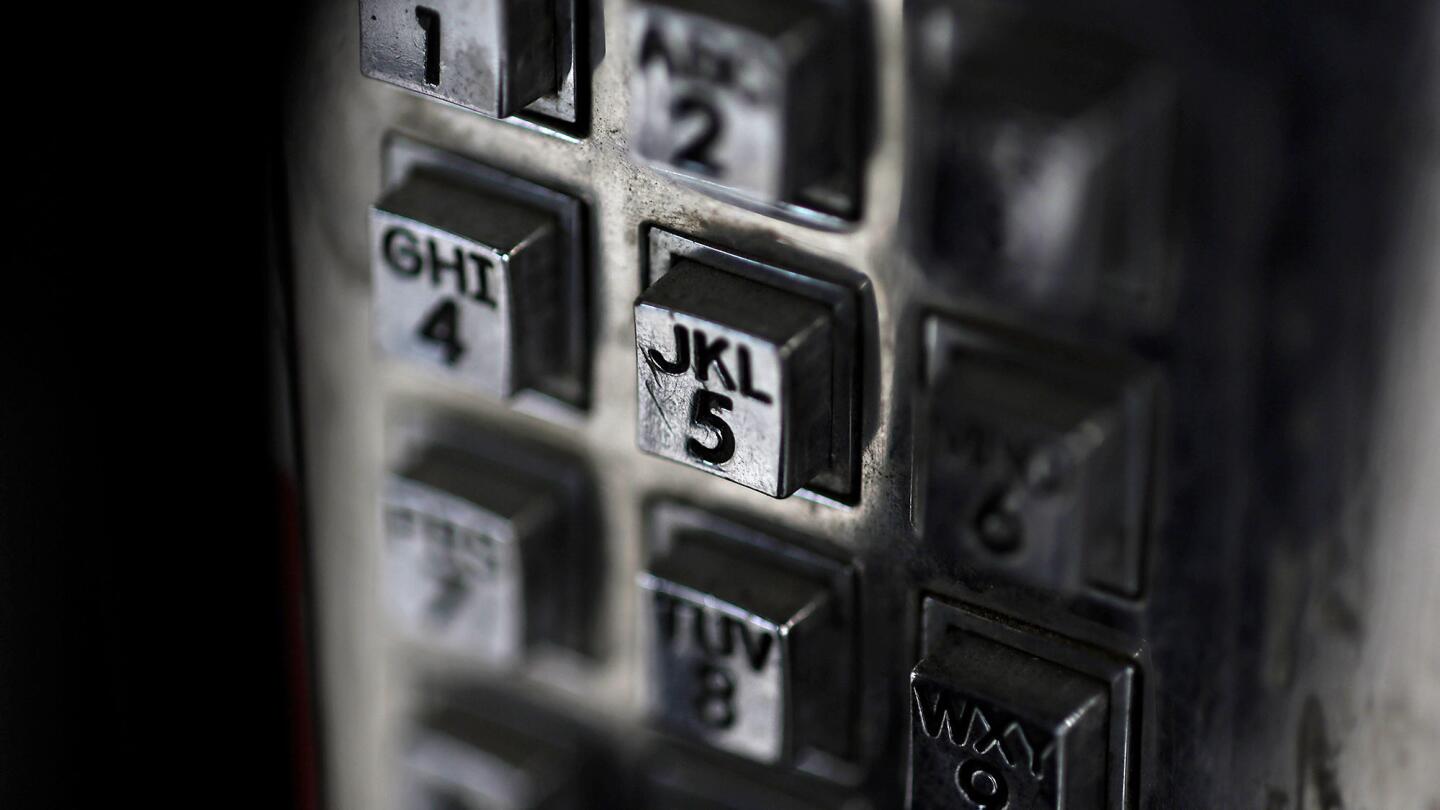
The first pay phone booths were made of wood and found in the lobbies of public buildings. Throughout the 1950s, they were replaced with glass and became more common on street corners. (Katie Falkenberg / Los Angeles Times)
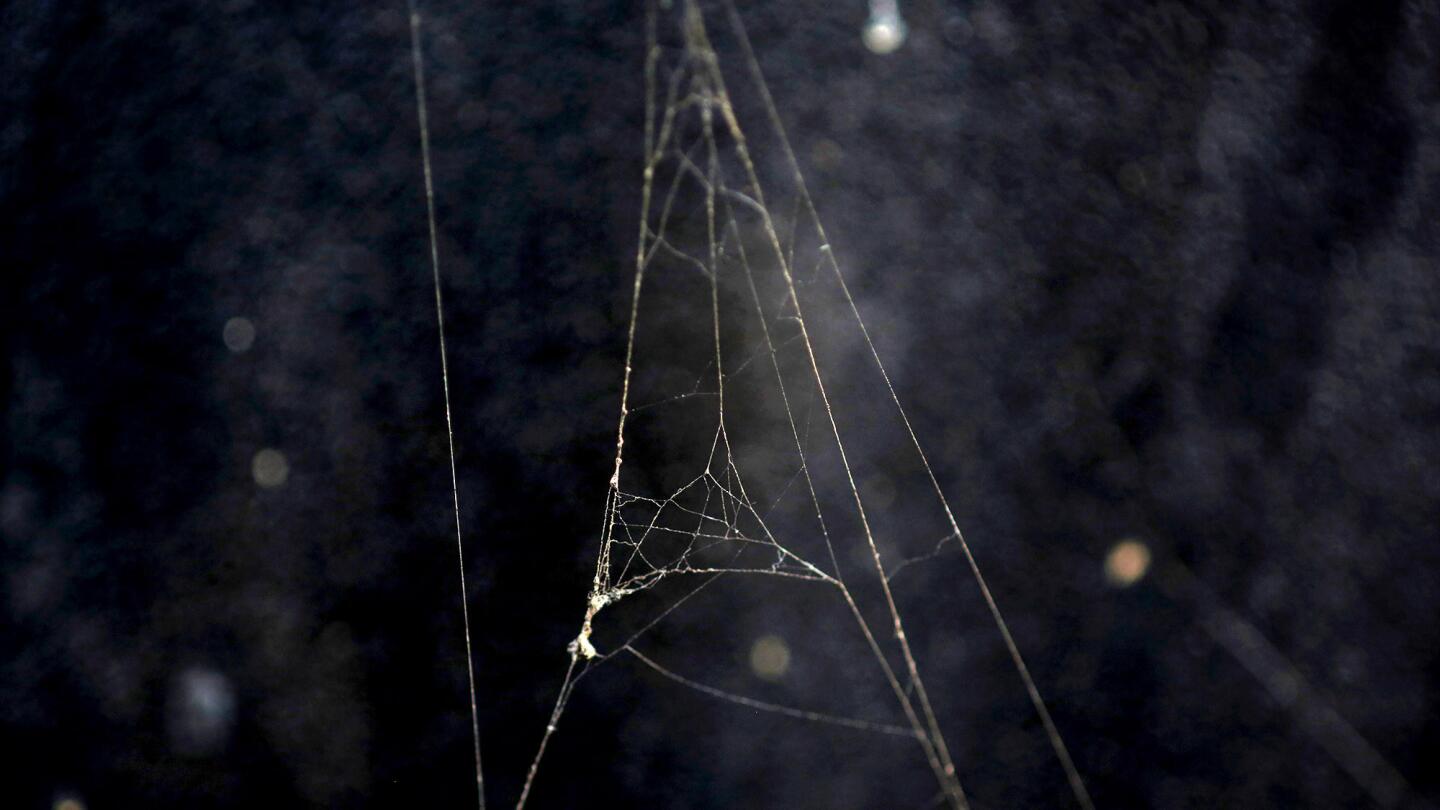
A spider web on a pay phone on South Leimert Boulevard in L.A. For the 90% of American adults who own cellphones, pay phones are reliable during natural disasters like earthquakes and hurricanes, when cell service can be disrupted. (Katie Falkenberg / Los Angeles Times)







